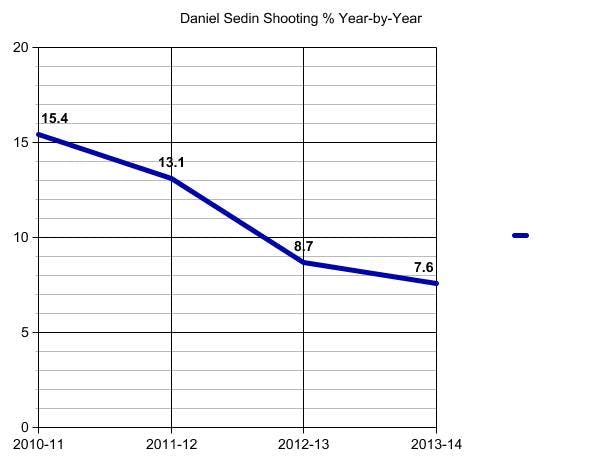A Closer Look At How The Canucks Have Owned The Northwest Division

"If you stop looking maybe they’ll stop beating us so badly!"
After you see something happen time and again right in front of your very eyes, you come to expect it. It’s human nature. You simply stop thinking that there could possibly be any sort of other outcome.
And that’s why you may have noticed that in Jeff Angus’ preview of the 2013 season, where he answered questions from readers in a mailbag format, there was no one losing any sleep over where the Canucks would finish in the standings. Anything can happen in a 48 game season – pigs could fly, the Wild could manage to fight off regression, even – but Canucks fans have just come to expect a Division title and a seat atop the Western Conference standings.
I take issue with people who look to undermine the Canucks’ accomplishments over the past two seasons. Obviously Presidents’ Trophies aren’t the ultimate goal, but there’s a reason the regular season takes place. The Canucks have absolutely dominated it, leaving no real doubt as to who the best team was. Just because they fell 60 minutes short, and then ran into a juggernaut who was sipping on some special sort of health elixir, doesn’t take away from the other 164 games over that span.
How have the Canucks managed to make it look so easy? Well, it doesn’t hurt that their two leaders have been the most consistent players in the league over the years. But more than anything, they’ve been able to run wild all over the Northwest Division.
Read Past the Jump for More on their Dominance of the Northwest.
The Canucks head into this season with 4 consecutive division titles, dating back to 2008-09. That year, they squeeked it out over the Calgary Flames by a two point margin, providing more evidence that Lawler’s Law is in fact a real thing. I’ll remember that season as the last one in which the Flames were even remotely relevant.
Since then, though, the division really hasn’t been contested. Below are the results of the ‘race’, in grasph form for you visual learners, over the past 3 years. You’ll note that I included each of the other divisions as well, just to show how significant the disparity between first and second place has really been.

The Canucks have really managed to take it to a whole other level over the past two seasons, in particular. They hold a 36-9-3 record against their Northwest Division rivals over that time. I’ll spare you the math, and assure you that it’s an exceptional winning percentage. They’ve accumulated just over 78% of all the possible points they could have earned and they haven’t exactly been gutting out the wins, either; they’ve outscored their opponents by a grand total of 156-94. It really hasn’t been all that close.
Against the rest of the league, they’re 68-33-15, which is still rather impressive, but a drop down to 65% nonetheless. That shouldn’t come as a surprise though, because there are some very good teams residing in the Central and Pacific divisions.
How long can we expect this to last? Sports usually tend to run in cycles, unless you’re the Detroit Red Wings or San Antonio Spurs. Surely the competition will catch up to the Canucks sooner or later, right? I think this is the basis for the ‘window’ discussion that every fan in Vancouver seems to feel obligated to have.
The Minnesota Wild had a great couple of weeks last season, and made a big splash by landing two big-time free agents in July. The Edmonton Oilers will stop at nothing to draft every single forward at first overall ever. The Calgary Flames have the Stampede, which I can vouch for as a grand time.
Yet oddly enough, I think their biggest current threat is the team that’s garnering the least national attention – the Colorado Avalanche. Even though the Avalanche have not been able to beat the Canucks in regulation since 2009, I am quite a fan of what Greg Sherman has been able to do in constructing that team.
On paper, I think you’d be hard-pressed to find too many teams with a forward corps in place that make more sense as a unit than theirs. That’s assuming they’re able to sign Russian enigma Canadian warrior Ryan O’Reilly before he tells them to shove it. But they’re still very young on the back-end, and unless Tyson Barrie is ready for top-four duty (a big if, but not impossible based on the season he’s put together in Erie so far) it may not be their time to put it all together just yet.
The back-to-back Presidents’ Trophies have been, in part, made possible by the relative incompetence of the division that the Canucks have played 24 of 82 games per season in. This year, they play 18 of the 48 against those teams (an even higher percentage). They should retain their advantage this season but going forward: the Canucks won’t be able to lean on dominating the team’s residing in the Northwest the way they have in the recent past.
Ultimately, I suspect that the improvement of teams like Colorado, Edmonton and Minnesota will be of larger consequence than the perceived problems with age that the team currently has…
Recent articles from Dimitri Filipovic





